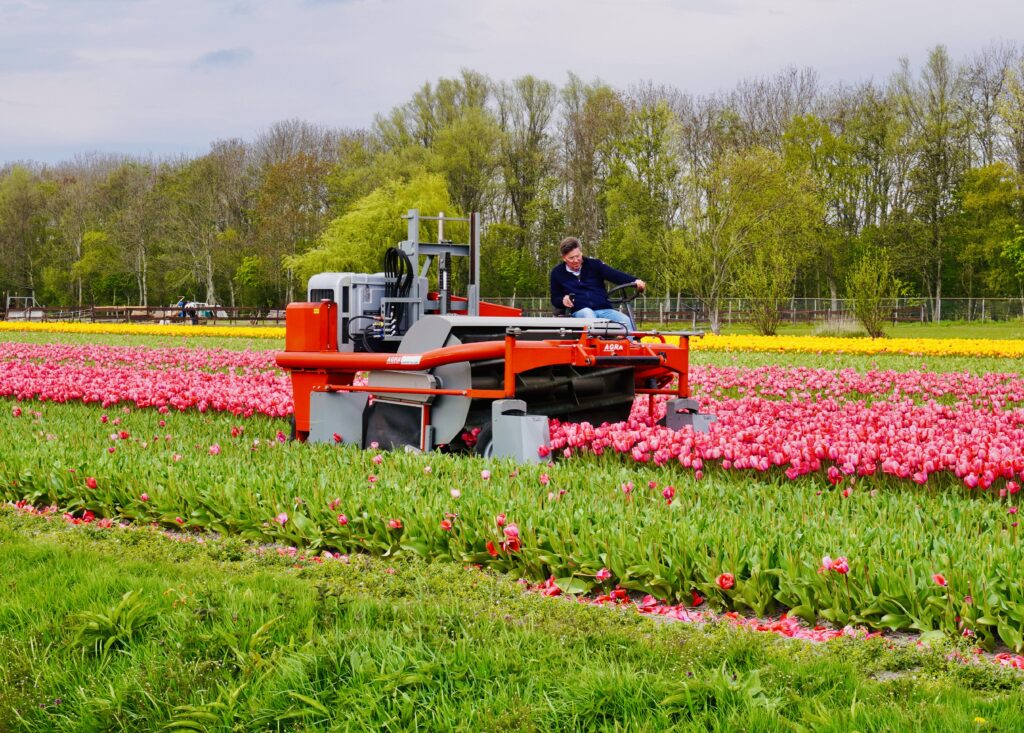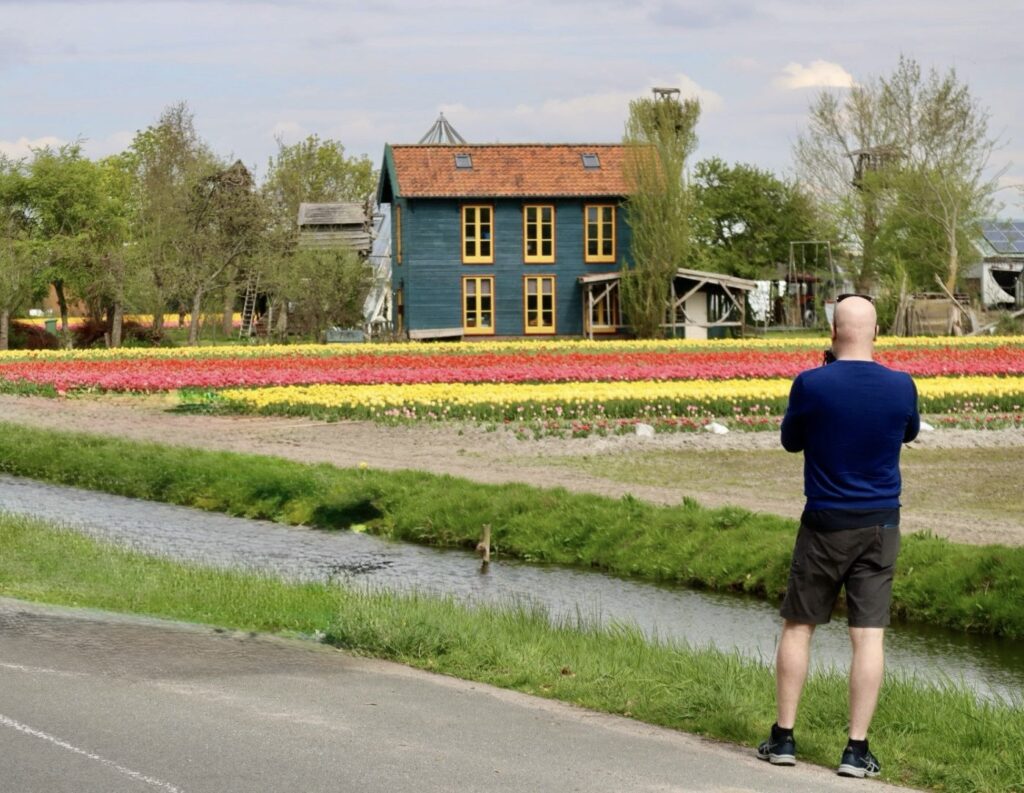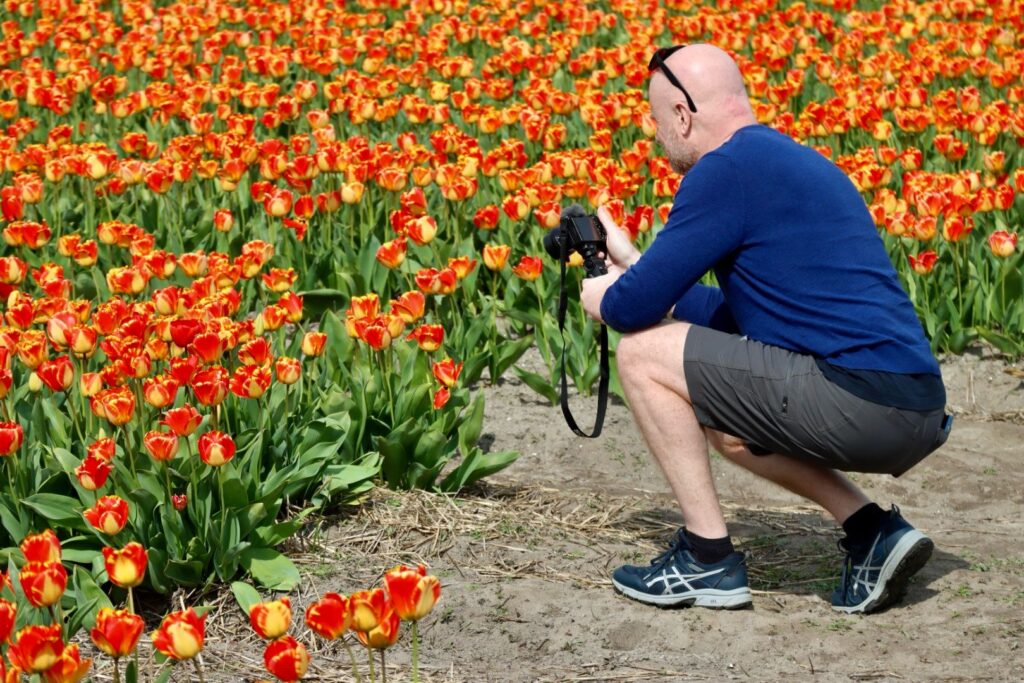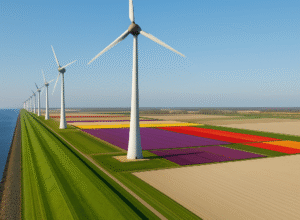Tulips, Tractors, and the Industry Beneath the Bloom
I was standing at the edge of a tulip field when the flowers started coming off.
Row by row, a large machine—part tractor, part conveyor belt, part guillotine—glided through the blooms, slicing off their bright heads in a single, efficient motion. Petals strewn across the ground like confetti after a parade. What had been a field of perfect color seconds before now looked abruptly… empty. Blunt stems swayed in the breeze where the flowers used to be.
It felt wrong at first. Like watching someone cut the heads off fireworks mid-spark.
But this is the part most people never see—the Dutch tulip, stripped of its beauty, revealing what the growers are actually here for.
Cut the Flower, Save the Bulb
For Dutch tulip growers, the flower isn’t the product. The bulb is.
Once the tulip blooms, it begins sending energy upward into the petals and stem. That’s lovely to look at, but not great for business. Growers want that energy stored below—in the bulb—so it can be harvested, sorted, sold, and replanted next season.
So, they “top” the flowers. They remove the bloom so the plant can redirect its strength. It’s practical. Slightly brutal. Entirely effective.
And it happens just when most visitors arrive—those few April weeks when the fields are at their most glorious, and also at their most temporary. The beauty you came to see? It’s already being cleared away.

Billions of Bulbs, Sorted by Hand (and Robot)
The Netherlands grows over three billion tulip bulbs each year. They are cleaned, inspected, sorted by size and quality, and shipped to over 100 countries. Some will bloom again in fields. Others will end up in pots, gardens, windowsills, wedding bouquets.
The bulbs are traded in massive auctions, where growers and exporters make deals by the crate. There are even futures markets for tulips—not for flowers, but for contracts on bulbs that haven’t bloomed yet.
The logistics are staggering: soil pH must be perfect. Crop rotation is essential. Machines lift the bulbs from the ground with gentle scoops, conveyor belts carry them like precious cargo, and digital scanners assess their quality faster than any human ever could.
Behind every picturesque row of red or pink or flame-colored tulips is a precise, seasonal machine—rooted in land, driven by export, guided by centuries of refinement.
The Dutch Talent for Taming Beauty
It struck me, watching that tulip tractor pass: how pragmatic this whole system is. There’s awe, sure. But no one’s swooning in the fields. The workers move calmly, efficiently. Aesthetics are secondary to process.
And that, in its own way, is deeply Dutch.
Tulips may be the national flower, but they’re not treated sentimentally. They’re managed. They’re optimized. The bloom is just one part of the cycle, and not the most important one.
It’s this combination—of restraint and ambition, of beauty held lightly—that feels like the true Dutch approach to life. Even the flowers are expected to pull their weight.

The Spectacle and the Source
It’s a strange disconnect: millions of people flock to the fields for the spectacle, and meanwhile, the growers are already clearing it away. One world moving through beauty; the other moving past it.
That tension stayed with me. I thought about how often we only want to see things at their peak—when they’re most visible, most photogenic, most obviously alive. And how much of life happens before or after that moment. In the planting. In the waiting. In the cutting back.
When I left the field, a few stray petals were still caught in my shoe tread. A reminder that what looks like loss can actually be growth. That sometimes, the most important work happens just below the surface—quiet, unseen, patient.
Like a bulb. Gathering strength. Waiting to rise again.


About What the Dutch is That?
Why are windmills, tulips, and wooden shoes so deeply tied to the Dutch identity? What’s real, what’s myth, and what’s been quietly misunderstood?
What the Dutch is That? is a series that unpacks how certain things became synonymous with the Netherlands—and what they reveal about the people, the land, and the rhythm of life here. Not just symbols, but stories. Not just icons, but origins.








